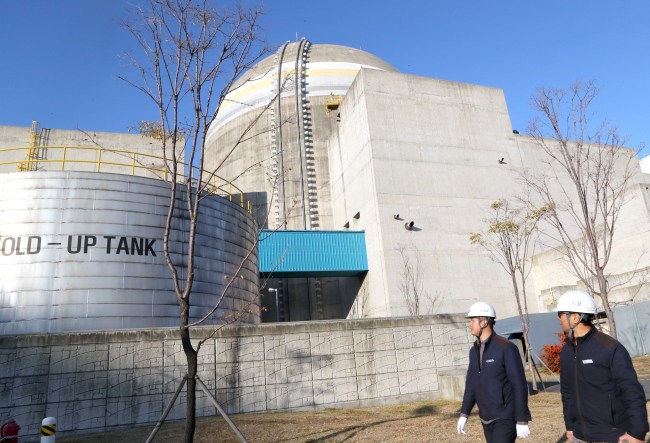[News Focus] Pohang quake to bolster talks on Moon’s nuke-free vision
By Bae Hyun-jungPublished : Nov. 16, 2017 - 17:53
The Pohang earthquake on Wednesday that has rekindled national anxiety over the safety of nuclear power plants -- mostly located in the southeastern part of the Korean Peninsula -- is likely to add momentum to the Moon Jae-in government’s nuclear-free energy road map.
Anti-nuclear groups here anticipate the agenda may even rethink the recent decision to continue with the construction of new reactors.
“Earthquakes in Korea are all the more dangerous as they may hit upon nuclear power plants,” a group of lawmakers for nuclear-free energy said Thursday in a statement, urging the government to accelerate its energy conversion plan.
Anti-nuclear groups here anticipate the agenda may even rethink the recent decision to continue with the construction of new reactors.
“Earthquakes in Korea are all the more dangerous as they may hit upon nuclear power plants,” a group of lawmakers for nuclear-free energy said Thursday in a statement, urging the government to accelerate its energy conversion plan.

Anti-nuclear civic groups such as the Korea Federation of Environmental Movements and Energy Justice Actions issues also raised their voice to condemn the disputed construction of two nuclear power reactors.
A state commission last month called for the resumption of the construction of Shin Kori 5 and 6 reactors in the southeastern city of Ulsan, a decision made upon debates and public surveys and which the presidential office Cheong Wa Dae accepted as the people’s will.
Based on the plan, the number of nuclear reactors is set to rise from the current 24 to 28 in 2022, then fall to 18 by 2031 and 14 in 2038.
Such a gradual retreat, however, is insufficient at the face of the mounting frequency of earthquakes on the peninsula, according to nuclear skeptics.
“Following the extensive quakes in Gyeongju last year, there have once again been ruptures in the Yangsan fault plane,” the KFEM said, asserting the number of reactors currently in operation or under construction should be reduced under emergency conditions.
Nuclear industry officials and some scholars, on the other hand, point to the fact the reactors remained intact even amid a magnitude 5.6 quake, saying the nuclear facilities are sufficiently safe and efficient.
“As previously studied, our reactors are well prepared for possible earthquakes and their consequences,” said Chung Yong-hoon, professor of nuclear energy and quantum engineering at Korea Advanced Institute of Science and Technology.
Korea Hydro & Nuclear Power announced earlier in the day that no defects were found among all the nuclear reactors, including the Wonsong reactors located some 46 kilometers from Pohang’s seismic center.
The KHNP is currently working on reinforcing 21 of the 24 operating reactors so that they may withstand a magnitude 7 quake, a process due to finish by June next year.
“With the devastating aftermaths of the Pohang earthquake, our country has come to ponder whether the energy shift timeline should indeed be accelerated,” said Han Byung-hwa, an analyst at Eugene Investment & Securities.
“There may still be disputes on the agenda, but the recent set of events made it clear that the Korean Peninsula, especially the Kori-Wolsong belt, is not at all safe from earthquakes.”
By Bae Hyun-jung (tellme@heraldcorp.com)







![[From the Scene] Monks, Buddhists hail return of remains of Buddhas](http://res.heraldm.com/phpwas/restmb_idxmake.php?idx=644&simg=/content/image/2024/04/19/20240419050617_0.jpg&u=20240419175937)







![[From the Scene] Monks, Buddhists hail return of remains of Buddhas](http://res.heraldm.com/phpwas/restmb_idxmake.php?idx=652&simg=/content/image/2024/04/19/20240419050617_0.jpg&u=20240419175937)

![[KH Explains] Hyundai's full hybrid edge to pay off amid slow transition to pure EVs](http://res.heraldm.com/phpwas/restmb_idxmake.php?idx=652&simg=/content/image/2024/04/18/20240418050645_0.jpg&u=20240419100350)

![[Today’s K-pop] Illit drops debut single remix](http://res.heraldm.com/phpwas/restmb_idxmake.php?idx=642&simg=/content/image/2024/04/19/20240419050612_0.jpg&u=)